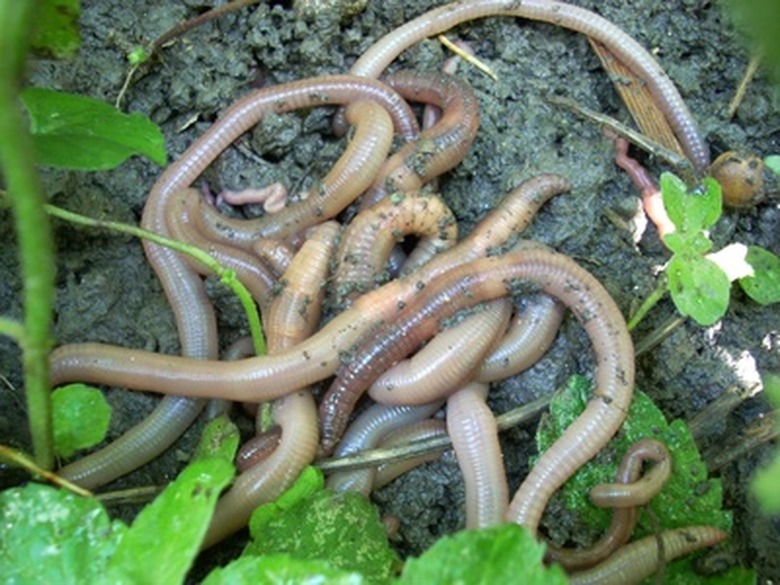How To Get Rid Of Earthworms In Lawns
Things Needed
- Lawn mower
- Thatching blade
- Leaf rake
- Lawn fertilizer
- Irrigation
- Carbaryl
Earthworms in lawns might be an indication of improper maintenance. According to the North Dakota extension service, night crawlers and earthworms can be a sign of lawns that are in need of thatching, raking and proper fertilization. Although some earthworms are good for the soil under the grass, too many can attract predators such as moles, skunks and raccoons. There are some chemical applications that will eradicate the earthworms, but correct lawn care generally will rid your lawn of any earthworm problem.
Step 1
Remove the thatch from the lawn that has the excessive earthworm problem. Thatch is dead grass and other debris that lays on the soil surface just under the grass. This material is the food that the earthworms and night crawlers eat.
- Earthworms in lawns might be an indication of improper maintenance.
- According to the North Dakota extension service, night crawlers and earthworms can be a sign of lawns that are in need of thatching, raking and proper fertilization.
Step 2
Attach the thatching blade to the lawn mower. Run the lawn mower in a single direction across the lawn. In other words, operate the mower in an east to west direction. This will pull up any unwanted thatch material from the soil surface.
Step 3
Rake the material from the lawn. Collect into piles. Transfer the raked thatch to a compost pile. The rotted material, once fully composted, can be added back to the lawn in late winter for extra organic material. Run the lawn mower, with the thatching blade still attached, in a north to south direction to remove more dead material from the lawn. Close inspection will reveal if more thatching is required. The end result is to have bare soil exposed just below the surface of the grass.
- Attach the thatching blade to the lawn mower.
- Run the lawn mower, with the thatching blade still attached, in a north to south direction to remove more dead material from the lawn.
Step 4
Apply a lawn fertilizer suitable for your species of grass and climate. Consult your local home store or the agricultural extension service for their recommendations on fertilization and application rates. Various species of grass and climates will require different fertilizers.
Step 5
Irrigate the fertilizer into the lawn. Maintain an irregular schedule of irrigation to the lawn. In most cases, watering the lawn on a weekly basis will increase vigor to the grass and aid in deterring earthworms from working under the lawn.
Step 6
Apply carbaryl to the lawn in the prescribe dose according to the manufacturer's labeling. This insecticide will kill many types of insects along with grubs and earthworms. The insecticide will have to be immediately irrigated into the lawn after application. Results will be seen as the earthworms, grubs and other insects will migrate to the surface.
- Apply a lawn fertilizer suitable for your species of grass and climate.
Warning
Exercise caution when applying any insecticide to your lawn. Excessive run off from the chemical might cause harm to aquatic life. Keep children and animals from any area that has an insecticide applied. Follow all label directions for application and disposal of the chemical.
